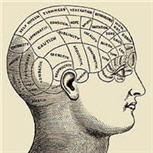Measuring the Turn-On
These are on-the-fly notes from the Consumer Engagement Conference; Panel Discussion Including Marianne Foley of Harris Interactive, Robert Passikoff of Brand Keys, Amy Shea Hall of Ameritest, Bob Shullman of Monroe Mendelsohn Research, Barbara Zach of IAG Research, moderated by Barbara Bacci-Mirque of ANA.
The audience was reminded of the definition of engagement, which is turning on a prospect to a brand idea enhanced by the surrounding context. We were told that it took months to come up with the exact definition of this highly publicized, much talked about media term. The engagement model of Engagement + Trust x Targeted Contacts = Brand Impact will hopefully help marketers determine just how engaged consumers really are with a given product, service or television program.
Some questions to keep in mind when trying to determine consumer engagement of a given program:
How would someone behave if they were engaged with a program?
For how long did a person watch a television program?
Did they watch alone or with someone else?
Scale emotion as positive or negative to determine emotional involvement. Scale it on a range from most engaged to least engaged. A highly engaged consumer equals high recall thanks to strong content. Creativity plays a major role here, and majority rules when making the point of “creative matters”.
How do we incorporate predicting market success in engagement? The answer links back to Professor Wilson’s presentation given earlier in the day – you need to understand the mind and must be able to read a mind. You want to be able to factor in the difference between driving behavior and real engagement. It is agreed that change needs to happen…if you want to do something new, you have to stop doing something old.
Let the truth be told – no one likes change. We are all creatures of habit. The slightest modification in your daily routine scares the heck out of you. So it’s not surprising that adjusting to the rapidly changing media landscape is challenging. It is important to build a connection between a brand and a consumer. You also need an emotional connection – how do you feel about something? Does a product fit you? Since people wear multiple hats – a career person, a mother/father, a wife/husband, etc., it’s important to determine which “me” you are engaging and how you’re planning to do it.
The audience was reminded of the definition of engagement, which is turning on a prospect to a brand idea enhanced by the surrounding context. We were told that it took months to come up with the exact definition of this highly publicized, much talked about media term. The engagement model of Engagement + Trust x Targeted Contacts = Brand Impact will hopefully help marketers determine just how engaged consumers really are with a given product, service or television program.
Some questions to keep in mind when trying to determine consumer engagement of a given program:
How would someone behave if they were engaged with a program?
For how long did a person watch a television program?
Did they watch alone or with someone else?
Scale emotion as positive or negative to determine emotional involvement. Scale it on a range from most engaged to least engaged. A highly engaged consumer equals high recall thanks to strong content. Creativity plays a major role here, and majority rules when making the point of “creative matters”.
How do we incorporate predicting market success in engagement? The answer links back to Professor Wilson’s presentation given earlier in the day – you need to understand the mind and must be able to read a mind. You want to be able to factor in the difference between driving behavior and real engagement. It is agreed that change needs to happen…if you want to do something new, you have to stop doing something old.
Let the truth be told – no one likes change. We are all creatures of habit. The slightest modification in your daily routine scares the heck out of you. So it’s not surprising that adjusting to the rapidly changing media landscape is challenging. It is important to build a connection between a brand and a consumer. You also need an emotional connection – how do you feel about something? Does a product fit you? Since people wear multiple hats – a career person, a mother/father, a wife/husband, etc., it’s important to determine which “me” you are engaging and how you’re planning to do it.

0 Comments:
Post a Comment
<< Home